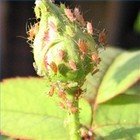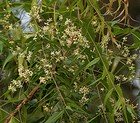Natural Garden Pest Control with Homemade Recipes
Whether you have a garden, homestead or just a balcony container garden, you will at some time or other, be invaded by garden pests. The most common being aphids and scale.
Before you rush out and buy commercial pesticides and insecticides, look at your kitchen pantry for readily available ingredients that will give you a natural pest control that will protect your vegetables and your family from any harmful chemicals that you would have used, had you not.
However, be aware that in some countries, like the UK, it is illegal to make homemade insecticide or pesticide recipes. So always check with your local council to stay on the right side of the law.
Also make sure that when you are making your homemade insecticides that you do so in such a way so as not to harm beneficial insects such as earthworms, or the ladybug.
Some Advice on Applying your Natural Garden Pest Control Sprays
Another good rule is to employ the several natural pesticide recipes in a rather weak state until you have gained experience in these things, as not only has the strength of the recipe to be considered, but the management of the plant before and after it is administered.
For garden pest control to be effective is very important to be thorough in the cleansing of plants, because they will be greatly affected by the attacks of insects, and should be either cleaned well, or burned if the outbreak is very severe and beyond help. If you don't treat your plants, the infection will spread.
Garden Pest Control for Aphids, Mealy Bugs, Scale, Thrips and Whitefly
 1/2
cup rubbing alcohol
1/2
cup rubbing alcohol1 quart liquid soap
Mix directly into a spray container. Do not spray in direct sunlight as leaf damage may occur. Spray, then let sit for 20 minutes. Spray plant down with clear water to reduce foliage damage. Spray every 3 days for 2 weeks.
Alcohol sprays is a natural pest control effective on aphids, mealy bugs, scale insects, thrips and whitefly.
Garden Pest Control for Woolly Aphids
This natural pest control using nasturtiums is effective against woolly aphids.Mix 1 cup nasturtium leaves with 1 cup of water. Simmer together on top of stove in an old pot for about 15 minutes. Cool and strain. Dilute with equal parts mixture to water. Spray where needed.
Homemade Insecticide Recipe using Nicotine to get rid of Aphids
1 cup liquid dish soap1 cup antiseptic mouthwash
1 cup chewing tobacco juice (Place 3 fingers of chewing tobacco in an old nylon stocking and soak in a gallon of hot water until mixture turns dark brown.)
Put mixture into a 20 gallon sprayer and fill the rest of the container with warm water. Spray on vegetables and plants every alternate week.
Another Homemade Insecticide Recipe to get Rid of Aphids
Take a handful of pipe or rolling tobacco into a gallon of water. Give it a stir and leave it for 24 hours. Then dilute it until it is a pale brown color. Spray the solution on to the affected plants, and you will find that any aphids on your plants will die off very quickly.Important: Do not spary on potatoes, tomatoes, peppers, egg plants or any other members of the Solanaceae family, as the tobacco spray will kill them too.
Another Homemade Insecticide Recipe to Rid of Aphids
In some countries lantana has been banned as it is seen as a noxious weed. However, this organic spray is effective against aphids.Boil 4 cups of lantana leaves in 4 cups of water. Boil for 20 minutes and spray on plants.
Garden Pest Control against Sucking Insects and Caterpillars
This homemade insecticide is useful against sucking insects and some caterpillars.90 g chopped garlic cloves
2 T mineral oil or liquid paraffin
15 g of pure soap or soap flakes
500 ml warm water.
Mix garlic and oil together and let is steep for 48 hours. Dissolve grated soap or flakes in warm water and then mix the 2 solutions together and then strain. Use 1 part mixture to 50 parts water. Spray as usual.
Quassia chips are also an excellent way of getting rid of chewing and sucking insects.
Garden Pest Control for Red Spider Mite
This homemade insecticide is effective against the tiny red spider mite.1/2 cup buttermilk
4 cups flour
20 L water
Mix the buttermilk with the flour and then add the water. Spray over a 2 day period to make sure that the infestation has been successfully been eradicated.
Garden Pest Control for Scale
If you find that your plants have scale this is the organic insecticide for you. Take one 1 tablespoon ground mustard seeds and add 20 parts of water to the seeds. Place in a sprayer and spray the affected plant.Garden Pest Control against Leaf-Eating Insects, Scale and Shield Bugs
This homemade insecticide and pesticide is very effective against any leaf-eating insects and has a limited effect against most scale and hard-surfaced pests such as shield bugs.4 bird's eye chilies, chopped (or as hot as you can find)
4 large onions, chopped
2 bulbs garlic, chopped
2 L soapy water
Combine all the ingredients, including the seeds from the chilies. Cover with the soapy water and allow to steep for 24 hours. Strain. Add water to dilute if required and spray. Can be stored in a sealed container in a dark place for up to 2 weeks.
Garden Pest Control Solutions against most Garden Pests
As soon as insects come into contact with the pyrethrum spray, they will die, attacking the nervous system. Neem, interrupts the sexual cycle of the insects resulting to complete erradication after several sprayings. See page for further details on this amazing organic pest control.
Pyrethrum is an African flowering plant from the chrysanthemum family and is deadly to most insects, and therefore a highly effective garden pest control ingredient. In addition, because it is not systemic and is destroyed by UV light, it is not deadly to mammals and can be safely sprayed on vegetables and fruit when picked 12-48 hours after application. Unfortunately, it is also deadly to good bugs as well, so use with care and only spray on heavily infested plants as a last resort.
Spray both the upper and lower surfaces of the leaves, because spray must directly contact the insects such as thrips that hide in leaf sheaths and crevices. Spray in cooler temperatures as it is more effective then, evening or late afternoon being ideal. Never use pyrethrin products around waterways and ponds. And for those of you who have dermatitis, asthma and sinus you may have an allergic reaction when using pyrethrum.
Grow your own pyrethrum from seed, which can be bought from your local seedman and use the flowers that are in full bloom. The active ingredient is found in the immature seed. Cut them off early in the morning and hang upside down to dry and leave in a well-ventilated dark place to dry. Light will cause the plant to lose its potency. When dried, grind with a pestle and mortar until you have a fine powder.
Mix 10 gm of pyrethrum powder to 3 litres of water. Let stand for 3 hours in a dark place. Add 1 teaspoon of dish washing liquid as a fixative just before use.
You can also steep your flowers in a jar filled with boiling water, and apply after it has cooled down.
However, the best way is to cover the flowers in a container with brandy, although kerosene and mineral oil will also work but not as well. Leave this mixture overnight keeping it away from any light. Strain the liquid and use 1 part liquid to 6 parts water.
To store your flowers place them in a freezer up to 6 months and use accordingly.
All-Purpose Natural Pest Control Spray Recipe
This is a very effective general spray that is extremely poisonous, however unfortunately it is also poisonous to bees so use with care, and keep out of reach of children.Boil 1.5 kg rhubarb leaves in 3.5 L of water, straining and bottling. Dissolve 100 g soft soap in 2 L of hot water and add to the leaf mixture when cold.
Use only on ornamental shrubs, and flowers, but NEVER use on herbs or vegetables.
Garden Pest Control against Aphids and Caterpillars
This is useful against aphids and some caterpillars.56 g of soap flakes or pure grated soap mixed with 5 L of hot water, which must be cooled before use.
Garden Pest Control against Asparagus Beetles, Flea Beetles, Earworms and Maggots
2 cups of chopped tomato leaves2 pints of water
1/4 tsp of liquid soap
Soak tomato leaves in water overnight. Strain this mixture then add another pint of water and liquid soap. Spray foliage and soil as needed. This spray is effective against asparagus beetles and flea beetles, ear-worms and maggots.
Garden Pest Control against Scale
Oil is great for suffocating the eggs and insects, especially in winter when the eggs are more porous at this time, and the oil more effective as a method of getting rid of a variety of pests.White Oil can be purchased at your local gardening store at great expense. Or, you can make your own homemade white oil at a fraction of the cost using the same simple ingredients!
White oil is particularly effective against scale.
White Oil Recipe:
Pour a cup of cooking oil and a few drops of washing-up detergent into a 1 L plastic bottle.Add 1/2 cup of water and shake well. Pour 250 ml into a 9 L bucket of water and mix.
Spray the mixture over and under infested leaves. Use on a cloudy day. Do not apply on plants when you have high summer temperatures as the oil will burn the leaves.
Garden Pest Control against Aphids, Snails, Fleas, Flies, Moths, Mosquitoes
Collect large amount of wormwood leaves and cover with a bucket of boiling water. Steep for 3 hours. Dilute, using 1 part mixture to 4 parts water. Allow to cool before using.Another homemade recipe for getting rid of fleas
Add a little sulfur to the dog's drinking water. Another method is to put 1/2 cup vinegar into the final rinsing water of your dog's bath water. Another is to boil a large quantity of mint leaves in 2 L of water. Strain and cool. After washing and rinsing the dog, pour the cooled mint solution over the dog and allow him to dry off naturally. Any fleas that remain will leave immediately.Garden Pest Control against Cane Toads
For those of you who live in Australia, and particularly Queensland, you are probably plagued with cane toads. Using them as golf balls in the dark is not very humane, although a common practice for the desperate! However, if you fill up a sprayer with pure Dettol and spray the cane toads directly, they will die almost immediately.Large numbers can be rounded up and placed in a bucket and then doused with Dettol. Not strictly organic but it does work, and I talk from personal experience! Wear gloves and protective eye-glasses so you are not affected by their poison yourself.
Garden Pest Control against Fruit Flies
The best way to do this is to set up fruit fly traps in the orchard. These can be made out of jam jars, or old ice cream containers and then strung up in the tree boughs.A Homemade Fly Trap Recipe:
Prepare 300g pulped oranges, 15 g ammonium carbonate (purchase from the chemist), and add 600 ml water. Mix and fill jars or buckets with the bait.Natural pest control is always better than toxic insecticides and pesticides as they usually only target the pest at hand, and are not harmful to bees and other useful insects.
Natural Pest Control for Greenhouse Pests
Kill off those unwanted greenhouse pests using laurel leaves. Bash up some laurel leaves so that you bruise them well. Leave them like that in bowls in either your greenhouse or your coldframes overnight.The bruised laurel leaves give off prussic acid gases which is deadly to most small insects.
Garden Pest Control for Powdery Mildew
A garden pest of a different kind. Not one with legs this time, but a pest that can kill your melons, cucumbers, and the like when it attacks the leaves, especially in humid weather.This spray can also be used to prevent the damping off of seedlings after transplanting them.
Take 1 cup chamomile leaves and place in a non-metal bowl. Add 3 cups of boiling water and allow to steep until cool. Strain. Dilute with equal parts of mixture to water.
Garden Pest Control against Nematodes
This organic spray control is effective against nematodes. Dissolve 2 kg sugar in a bucket of water. Drench the soil to kill nematodes. Molasses can also be used, but don't use honey as this may transmit disease back to the bees.Other Resources for Garden Pests and Other Interests
Go from Garden Pest Control back to Garden PestsNeem for natural control of pests
Nasturtiums for Codling Moth
Companion Planting for Insect Control
How Safe is our Food?
Go to How to Grow Vegetables
Go to Organic Gardening
You can Add your Own Comments on Natural and Organic Pest Control here!
We have lots of pages where you can contribute to throughout this website. We love hearing from our readers, and hope you will be one of those we hear from too. Please feel free to add anything you like regarding natural organic pesticides. You can do that by writing in the form below.
Leave a Comment
Do you have anything that you would like to add after reading this page? We would love to hear your thoughts. If you can add additional information to what has been written here you will be adding value to the website! No need to have any special skills - just type and submit. We will do the rest!
Other Comments
Click below to see comments from other visitors to this page...
Natural Bug Deterant 




One year I had potato bugs by the bookoos. I purchased an old blender at a yard sale. I picked off 1/2 cup of the bugs, added water and put them in the …
Aritha Spray for Mealy Bug 




I read these articles and find them really very helpful.
I want to share with you that once I sprayed aritha water on mealybug and was gone in a day. …
Homemade Spray for Peach Tree Borers? 




Have spots on my peach tree,that have a clear jelly-like blobs on the branches. I was told it's peach tree borers.
Is there a homemade spray I can make …
Natural Repellants and Pesticides 




I was reading yesterday about Natural pesticides and repellants which went something like this.
Lemon sented cleaners like pine sol and lemon pledge …
measurements in recipes 




Teaspoon, Tablespoon, cup, quart - we ALL understand those measurements but, when you mix it up with grams, millimeters etc. - you lose us.
Sadly, …
How to get rid of stink bugs? 




What is the best way to deal with stink bugs and to get rid of them in the garden?
How about roaches and flies? 




Where I live, here in Las Vegas, Nevada, each fall and winter, these and other critters seek warmth and sometimes invade your home overnight if your not …
Need a natural solution for Ash borer problem affecting ash trees. 




I am in desperate need of a natural solution. My ash trees are declining at a rapid rate.
Also, is their a solution to support the trees while I am trying …
Information on Anti Termite Home made receipe needed. 




Thanks a ton for all the wonderful information. Would appreciate if some home made solution could be given for fighting out termites.
Keep up the fine …
Can we have pest/insects image? 




If you can add the images of pest/insects, it will be helpful for reader to pick right solution for their problems.
Aphid control and ladybirds Not rated yet
I sprayed a severe rosy woolly aphid infestation on my apple tree with a mixture of crushed garlic stepped in used cooking oil - left for 2 days in …
How to keep Japanese beetles away Not rated yet
My dog has improved life on my little farm but has altered our Eco system. Guinea fowl and chickens no longer graze for grubs and larvae in the large yard …
What about bystanders? Not rated yet
The treatments mentioned like soap and oil say that they kill aphids. Does it also kill the good bugs like ladybugs?
***
If you have an aphid …
natural pesticides for cucumber beetles Not rated yet
What can I use to control cucumber beetles? Last year I had so much trouble with them.
****
Cucumber beetles can be either striped or spotted …
Vine weevil larve Not rated yet
Hi do you know of an organic pesticide to get rid of vine weevils and vine weevil larvae!
*
Vine weevils are very difficult to get rid of, …
Thanks for the Information on Homemade Pesticides Not rated yet
This site is very important to me to inform our organic tea farmers.
I kindly request an update this site with new pesticides that one can made at home …
Caffeine and cane toads Not rated yet
Many amphibians are killed by small amounts of caffeine especially frogs. Caffeine is not that expensive if bought from a chemical house.
Another idea …
How to get rid of Bed Bugs? Not rated yet
Do u have a safe and proven method for killing bed bugs?
***
Bed bugs are a big problem and difficult to get rid of if you don't follow a strict …
Organic spray against Powderery Mildew Not rated yet
If you have powdery Mildew a good simple and cheap and most of all organic curative is.....milk. Mix one part of milk with 20 parts of water, spray once …
White Fly spray by using Washing Soap-Powder Not rated yet
A very good and simple way of getting rid of white fly is to spray them with washing powder 5 grams per liter. We used Ariel with success. Erik
Oak Tree Fungus Not rated yet
Thank you for the information. I will certainly give it a try. I have tried commercial products with little or no success.
Stan
Organic Fungicides for Oak Trees Not rated yet
Does anyone have a recipe for a homemade organic fungicide for oak trees?
This site is great, lots of information, keep up the good work.
…
Fruit Fly Trap Not rated yet
I make wine every year and many fruit flies tend to gather around the crocks. I learned to take a rather flat long Tupperware or plastic receptacle, pour …
Spanish bugs Not rated yet
We live in Spain and the bugs are really strong. Will try these solutions. Thanks a lot.
Linda
Thanks a lot Not rated yet
Hi..
Thanks for the useful and healthy information, will give it a try and will pass on...
Thanks and keep going...
Regards
Jai
Cottonroot Rot in Deep South Texas Not rated yet
Cottonroot rot has been considered as a possible culprit in the decline of some very much loved Ash trees that I planted with my father over 30 some odd …





New! Comments
Do you have something of value to add? Leave me a comment in the box below.